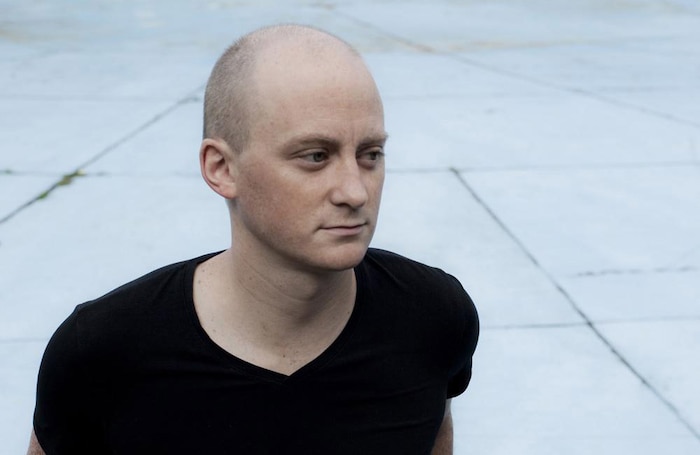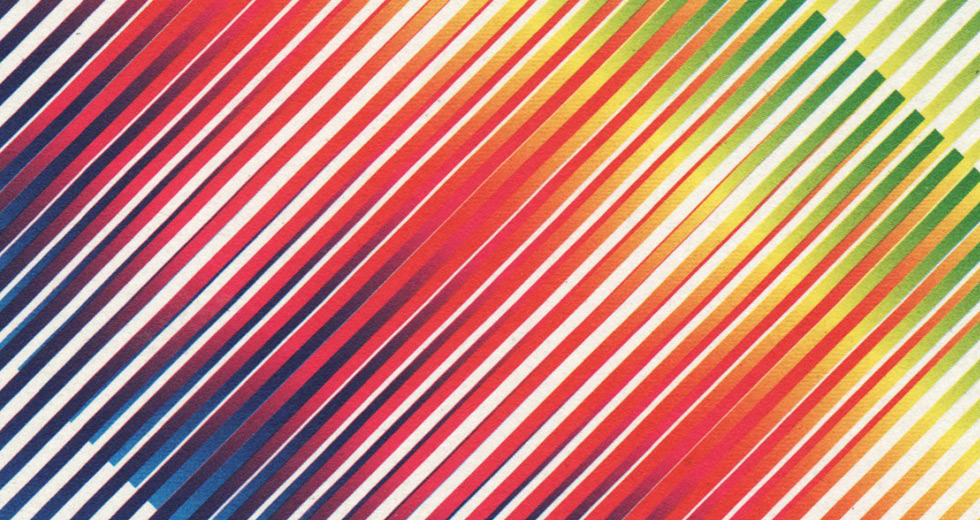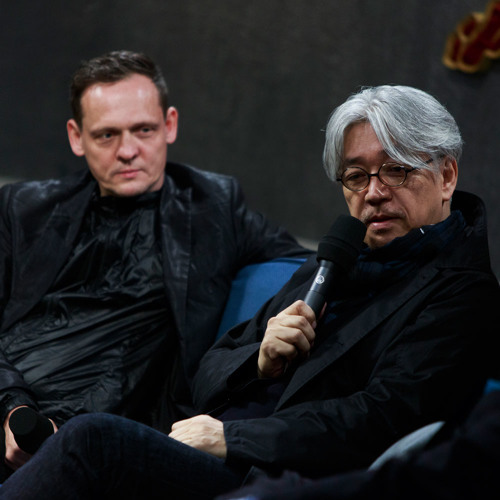Interview: Kangding Ray
The Raster-Noton producer opens up about his craft

David Letellier grew up in France, and his initial forays into music involved stints in various rock and industrial groups. However, his study of architecture eventually brought him to Berlin, and it was in the German capital that he truly began to operate as a solo artist, eventually connecting with storied experimental outpost Raster-Noton and releasing his debut LP as Kangding Ray, Stabil, in 2006. Although the record didn’t perfectly fit with his label’s harsh, glitch-laden aesthetic, it nonetheless found an audience, and Raster-Noton has continued to provide a home for Letellier’s albums, including 2008’s avant-pop collection Automne Fold, 2011’s techno flirtation Or, 2014’s conceptual Solens Arc and 2015’s bass-heavy dystopian drama, Cory Arcane.
Over time, the Kangding Ray project has increasingly been influenced by club sounds, an evolution spurred by his relationship with the Stroboscopic Artefacts label, which has also issued multiple EPs from Letellier over the years. But while the music of Kangding Ray now bears additional traces of the dancefloor, it continues to operate in its own dark and distorted headspace, and is perhaps best realized in Letellier’s live shows, which are often complemented by equally dazzling visuals. In this interview with RBMA Radio’s Shawn Reynaldo, he talks about all of the above and more.
I moved to Berlin because of architecture... Then when I came here, I discovered another side, which was music.
Maybe we could start with your background.
I was born in Normandy, France, in a really small village, basically in the countryside quite near the sea. There were not many things to do there, definitely no club culture or anything like that. My friends and I were playing guitar and playing rock bands. I guess I was a grunge kid, and then later I got into more industrial music, noise, a lot of post-rock things. I was playing in a couple of bands, mostly guitar but also drums sometimes.
I moved to Rennes in Brittany to study architecture. At that time I was still continuing to play in rock bands, and we were playing quite a lot in really shitty bars every Saturday, loading the car with all kinds of instruments and just going there with a lot of passion to play for 20 drunk people in a bar.
It was a fun time, but at some point I got frustrated by the limitations of the rock band and I just started to question it with my bandmates. Especially the drummer part of it. I had a pretty clear idea how the beat should be, and never managed to make it work in these bands. The music was pretty crap, anyway, so there was no big hope about it. It was just more a sort of social thing.
You mentioned that you moved to Rennes to study architecture. Can you talk about what attracted you to architecture?
What really interested me is that there was both the very direct technical way of acting on the reality, but there was also another layer in architecture which is a more philosophical or intellectual level. I figured it was really one of the most amazing activities of humankind, in a way. Actually constructing buildings and changing reality at this scale is very impressive. I have a lot of respect for that field, even though I’m not really involved in it anymore.
How did that take you to Berlin?
I moved to Berlin because of architecture, because I wanted to finish my studies abroad. At that time, Berlin didn’t have the [music] hype it has right now. On the architectural side, though, it was really interesting. It was one of the biggest construction sites in Europe after the wall came down in the ‘90s. There was so much change. The city was changing rapidly, in almost real time, and to be able to experience it as a architecture student, it was really freeing.
Then when I came here, I discovered another side, which was music. I definitely discovered club music and techno and all these things here. I had very little knowledge before.
At what point did you start making solo music as Kangding Ray?
Soon after I moved to Berlin, I started to produce electronic music on my own. At the end of the band, we bought a sampler and some other machines, so I just brought them with me because I was the only one who could actually operate them. It was an Akai sampler with 32 megabyte of RAM. That was 2002, I think, when I really started with that.
A bit later, I got in contact with Carsten Nicolai through my work as an architect. We worked together on a competition for a public space in Hamburg. A couple of years later, 2003 or 04, he just happened by chance to listen to what I was doing in my little bedroom and got really interested in it and sent it to Olaf Bender, and then he said, “If you can do an album, we could release it.” I had this pending offer, but this had to be an album. I didn’t have a name, but I had a proposal from the really respected record label, so I worked my ass off to do the first one.
It was a long process, but it was beautiful at the same time, three years of trying things and just throwing them up and then starting again and recording and trying to find my own way because I had this goal releasing on Raster-Noton. At some point, the album was finished. It took three years.
When you were making the album, what did you have in mind?
Definitely the function of dancing was not included yet, let’s say. At the end, it was really much more pure sound research. I wanted to explore the sound as a material, very much like I would do sculpture or whatever.
Also, I didn’t have any money to buy synths or get a 808. I only had this sampler, which is actually a great thing because the sampler doesn’t make any sounds, so it doesn’t tell you what to do. There’s no sound in a sampler, so you have to feed in with sound. You have to make a first choice, which is, “What do you do? What is your base material, your source?”
Since I didn’t have any machines, I started to do recordings, field recordings. It actually is the cheapest way to produce sound because all you need is a little mike. You want a sound, you can really easily find it in nature. Not easily. But if you’re familiar with materials, like how to hit material well... I got really into this routine of collecting sound and building tracks out of it. That’s how I started. It was a good approach, the best approach to avoid replicating something I knew before.
How did your second album differ from the first one?
I was working at night in this big loft space. I really wanted to integrate myself much more in the music and not have this purist approach that I had with Stabil. I wanted to have a physical, almost pop approach to Automne Fold. I even sang some songs. When I think about it now, it was kind of courageous, naïve statement.
Your next album, Or, is when people started talking about techno in relation to your music. Were you getting more into techno?
Yeah. Or was definitely the album where people started to talk about techno, but the real turning point was, I think, right before with the Pruitt Igoe EP. At that moment, I was getting more and more involved in the club scene and was going out much more and got really interested in techno but also dubstep, which was also exploding at that time.
Going to places like Berghain and Tresor and all the smaller clubs, we started doing some of this dark, intense music. It just changed my view on it. I wanted to be part of it, but by that time I had done loads of gigs with theater-seated audiences of like 300, 400 people, where people clap at the beginning and they listen carefully to all the little sounds you do.
After doing a couple of years of those gigs and playing in really arty, experimental environments, I started to research. For each gig I was asked to go somewhere else, I would just say, “Yes, yes, yes, I want to do this one.” It was not only because I wanted to do this music, but also because I wanted the experience of it, of playing it. It was really a conscious choice of, “Okay, my life, how is it going to look like in the next few years?”
Let’s talk about the new album.
Cory Arcane is a strange album for me. It’s probably the most advanced thing I’ve ever done, but also probably the least controlled because I produced it fairly quickly compared to everything else I’ve done before. It has this sort of urgency, this sort of violence embedded in it, which comes both from the moment where I was doing it but also from the way I did it, the machines I used.
Olaf listened to the first demo and then told me, “We have to bring it out this year!” He just pushed me to make it fast, finish it fast, because he wanted to have it in 2015. Usually I don’t care really too much about this momentum kind of thing because I usually try to make things you can listen to in three, five and six years.
It has this influence of sometimes I would even say hip hop and R&B sometimes, but also this violent kind of modular techno, straight, raw, almost unproduced tracks. It represents a new side of me, and what happens when I change my habits.
Can you talk about the concept behind it?
While doing the album, I thought actually that this little monster I was creating started to really look like me in the disguise of someone else. I felt somehow it was feminine, but dark at the same time. It had both this weird violence but also a sweet kind of thing in the background.
I started to invent a story of this woman navigating in a dystopian or near future who is searching for liberation or to free herself of all the things that can block us in a modern society, from politics to the internet. It’s very much influenced by one of my favorite authors, Hakim Bey. It’s anarchic, but in a very ironic and tongue-in-cheek way. I really like this attitude of saying really controversial things but in a light and ironic way, which makes them nicer and easier to receive.

